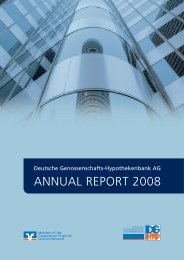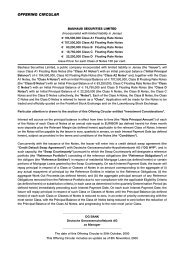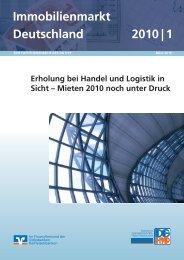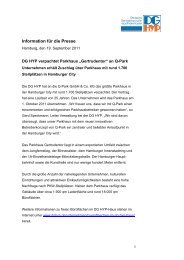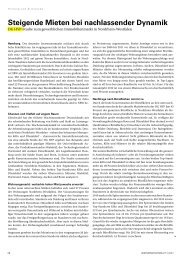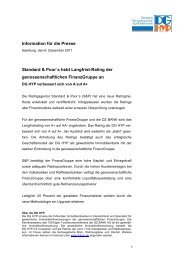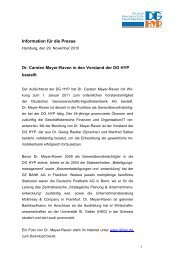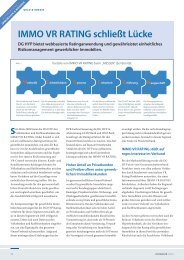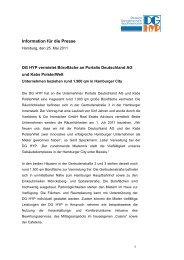Covered Bonds - DG Hyp
Covered Bonds - DG Hyp
Covered Bonds - DG Hyp
You also want an ePaper? Increase the reach of your titles
YUMPU automatically turns print PDFs into web optimized ePapers that Google loves.
<strong>DG</strong> HYP COVERED BONDS – PFANDBRIEFE – QUALITY THE PATH OUT OF THE CRISIS SPECIAL MAY 2009<br />
Legal framework<br />
Germany’s Pfandbrief Banks Act<br />
The legal basis for issuing pfandbriefe encompasses market practices/conventions and<br />
supervisory structures, as well as rules and regulations specific to the issuer, which<br />
constitute the core elements of the institutional framework in which pfandbriefe are<br />
enshrined. Even more: the pfandbrief would not exist without the Pfandbrief Banks Act. In<br />
recognition of the significant ability of the pfandbrief legal regime to promote confidence and<br />
increase ratings, we will present in more detail below the most important elements of the<br />
current applicable legal framework – including the recent revision that was only passed into<br />
law a few weeks ago. We will supplement this by discussing the areas that we consider still<br />
need improving, even after the recent revision.<br />
Aside from the detailed regulations of insolvency law included in the 4th Financial Markets<br />
Promotion Act, the legislative changes that came into force in 2005 are undoubtedly the<br />
most remarkable of all the changes in the last decade. Strictly speaking, this revision was<br />
not an “ordinary” amendment of the existing pfandbrief, but rather introduced a new law that<br />
for the most part follows the proven German Mortgage Banks Act (<strong>Hyp</strong>othekenbankgesetz -<br />
HBG) that was in place prior to that. The Pfandbrief Banks Act (PfandBG) came into force<br />
on 19 July 2005 and amalgamated the previous separate regulations governing the<br />
issuance of pfandbriefe by specialist ship and mortgage banks as well as public sector<br />
banks, and abolished the former “specialist banks principle” with its positive connotations.<br />
PfandBG unifies three laws<br />
HBG = Mortgage Banks Act; ÖPG = Law on Pfandbriefe and related bonds of public-sector banks; Schiffspfande<br />
= Pfandbriefe based on ship pfandbrief law<br />
Source: DZ BANK<br />
Issuing license replaces specialist banks principle<br />
The definition of pfandbrief business as proprietary banking business in the German<br />
Banking Act (Kreditwesengesetz – KWG) will permit all banks that have a license to conduct<br />
banking business to issue pfandbriefe. A bank must apply to the Federal Financial Services<br />
Supervisory Authority (Bundesanstalt für Finanzdienstleistungsaufsicht – BaFin) for a<br />
license to transact pfandbrief operations. The license will be granted provided the credit<br />
institution meets certain minimum requirements, which are listed below:<br />
�<br />
Before Juli 2005 today<br />
HBG ÖPG<br />
„Shippfande“pfande“<br />
The bank must have core capital of at least EUR 25 million.<br />
Pfandbrief Act<br />
(PfandBG)<br />
Pfandbriefe – subject to numerous<br />
conditions<br />
PfandBG combines three laws<br />
BaFin grants licenses<br />
Minimum requirements<br />
17





